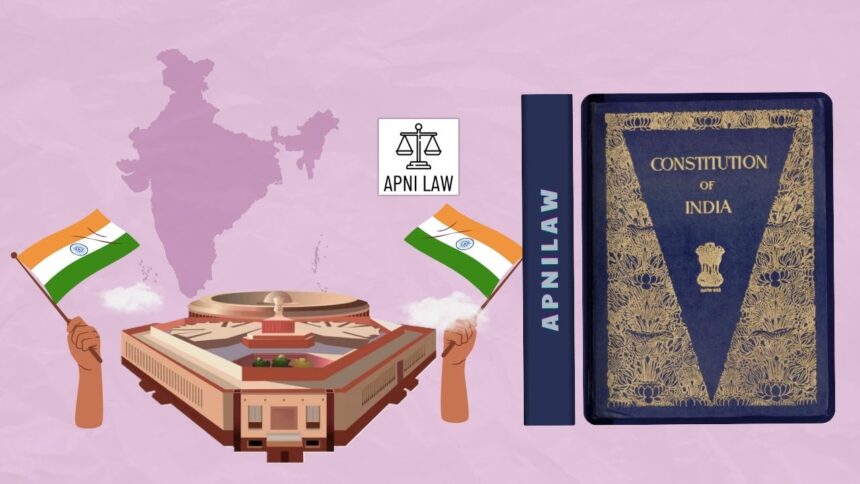Introduction
The Indian Constitution gives citizens powerful tools to protect their Fundamental Rights. Among them, writs stand as some of the most effective remedies. A writ is a formal order issued by the courts, directing individuals or authorities to act within the law. Articles 32 and 226 empower the Supreme Court and High Courts to issue these writs when rights are violated.
By using writs, courts in India ensure that no authority misuses its power and that justice remains accessible to all. Each type of writ has a unique purpose, and together they form the backbone of constitutional remedies.
Habeas Corpus: Protection of Personal Liberty
The writ of Habeas Corpus, which means “produce the body,” is issued to release a person unlawfully detained. It prevents the State from depriving individuals of their liberty without legal justification.
This writ has saved countless people from arbitrary arrests and illegal detention. A landmark example is ADM Jabalpur v. Shivkant Shukla (1976), where the debate centered on whether Habeas Corpus could be suspended during an Emergency. Although the Court restricted its scope then, later judgments reaffirmed the principle that personal liberty must remain protected under the rule of law.
Habeas Corpus remains the strongest shield of freedom against misuse of state power.
Mandamus: Command to Perform a Duty
The writ of Mandamus, meaning “we command,” is issued when a public authority fails to perform its legal duty. The Court orders the authority to carry out its responsibility in accordance with law.
For example, if a government body refuses to provide benefits under a welfare scheme despite eligibility, the affected person can seek Mandamus. However, this writ is not issued against private individuals or the President of India.
Mandamus acts as a reminder that public officials are accountable to the people and cannot ignore their legal duties.
Prohibition: Preventing Excess of Jurisdiction
The writ of Prohibition is issued by a higher court to a lower court or tribunal, stopping it from acting beyond its jurisdiction. It prevents misuse of judicial power at the early stage of proceedings.
For instance, if a tribunal tries to decide a matter outside its authority, the High Court or Supreme Court can prohibit it. This writ ensures that lower courts remain within their legal boundaries and do not encroach upon matters they cannot decide.
Certiorari: Quashing Wrongful Orders
The writ of Certiorari allows a higher court to review and quash orders passed by a lower court or tribunal if they are illegal, biased, or outside jurisdiction. Unlike Prohibition, which stops proceedings before a decision, Certiorari corrects errors after the decision is made.
A famous example is A.K. Gopalan v. State of Madras (1950), where the scope of Certiorari was discussed in relation to personal liberty. Over time, the judiciary has used this writ to strike down unlawful administrative and judicial orders, thereby protecting fairness in governance.
Quo Warranto: Questioning Authority
The writ of Quo Warranto, meaning “by what authority,” questions whether a person holding a public office has the legal right to do so. It prevents unauthorized individuals from occupying positions of power.
For example, if someone is appointed to a government post without meeting the required qualifications, any citizen can approach the Court for Quo Warranto. This writ safeguards transparency and ensures that public offices remain in the hands of rightful authorities.
Significance of Writs in India
Writs empower citizens to directly seek justice when their Fundamental Rights are at stake. They reinforce the principle of rule of law, making sure that even the government remains within constitutional limits. By providing remedies through Habeas Corpus, Mandamus, Prohibition, Certiorari, and Quo Warranto, the judiciary upholds accountability, fairness, and democracy.
Through these writs, the Constitution assures every citizen that rights are not abstract promises but enforceable guarantees.
FAQs on Writs in India
Why are writs important in the Indian Constitution?
They act as remedies that allow citizens to enforce their Fundamental Rights directly in the Supreme Court or High Courts.
Which writ protects personal liberty the most?
The writ of Habeas Corpus protects individuals from illegal detention and ensures freedom.
Can writs be filed in High Courts as well as the Supreme Court?
Yes, under Article 32, writs can be filed in the Supreme Court, while Article 226 gives High Courts wider powers to issue writs even for legal rights beyond Fundamental Rights.
Conclusion
The types of writs in India form the backbone of constitutional remedies. Habeas Corpus defends liberty, Mandamus compels duties, Prohibition and Certiorari check judicial overreach, while Quo Warranto preserves the sanctity of public offices.
Together, these writs make sure that the Constitution remains a living document, protecting the people against misuse of power. By empowering citizens and holding authorities accountable, writs embody the true spirit of Indian democracy.
For any specific query call at +91 – 8569843472








